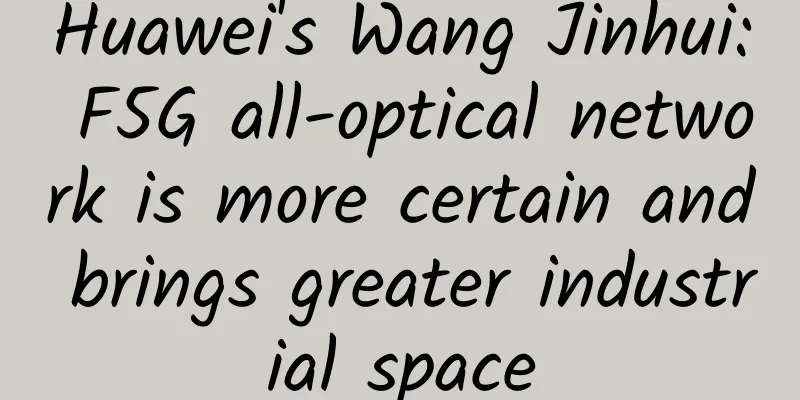5G promotes the development of industrial Internet, and we need to pay attention to these two points in the future

|
The Industrial Internet is the key cornerstone and important force of the new generation of industrial transformation. The development of the Industrial Internet can not only accelerate the efficiency and decision-making of various industries by generating and processing more data, but also promote the intelligent transformation and upgrading of industry enterprises. At the same time, through the continuous promotion of industrial digitalization and digital industrialization, it can also accelerate the further rapid growth of my country's digital economy. Based on this, my country has attached great importance to and strongly supported the Industrial Internet in recent years.
Since my country first proposed the industrial Internet in 2017 and the National Development and Reform Commission included it in the "new infrastructure" in 2020, with the continuous improvement of the strategic height, my country's development has achieved remarkable results. At present, the development of my country's industrial Internet has formed multiple clusters such as the Yangtze River Delta, Guangdong, Hong Kong and Macao, and Beijing-Tianjin-Hebei. The total number of industrial Internet logo registrations has exceeded 5.5 billion, and the platform has connected more than 40 million industrial facilities. The infrastructure construction and application innovation ecology are very encouraging. However, due to the large amount of funds required for comprehensive construction, the many challenges faced by the technology itself, and certain shortcomings in commercial integration and later popularization, my country's industrial Internet development is still in its early stages and faces many problems that need to be solved. For example, these include breaking the data island phenomenon, improving the core technology innovation capabilities, and improving legal standards and norms... If these problems cannot be eradicated, my country's development will stagnate. So, facing so many severe challenges and problems, how can we effectively overcome them? There is no doubt that 5G technology, which is being deployed, built and developed at an accelerated pace, is expected to lend a hand and become a good helper to promote the faster and better development of the industrial Internet. So far, my country has built more than 800,000 5G base stations, and the number of 5G terminal connections has exceeded 300 million. Both 5G construction and application have achieved initial results, which can bring many benefits to the development of the industrial Internet industry. For example, the application of 5G networks can effectively improve the interconnection and data transmission capabilities of the Industrial Internet. As we all know, 5G has the characteristics of high speed, low latency, and large capacity. The integration of 5G technology into the Industrial Internet can provide reliable technical support for the connection between the Industrial Internet and industrial equipment, and easily meet the actual needs of enterprises for data transmission and data processing, thereby easily solving problems such as "data islands" and industrial data connections. In addition, the integrated application of 5G technology can also make the integration of industrial Internet with cutting-edge technologies such as artificial intelligence, cloud computing, VR, and AR closer, thereby further promoting the digitalization, intelligence, and networking transformation and upgrading of the manufacturing industry, allowing the industrial Internet to truly play its own value. In fact, through the integrated development of 5G and the industrial Internet, not only the industrial Internet, but also intelligent technologies such as 5G and AI can be further implemented and upgraded. Based on this, my country has been accelerating the development of "5G+Industrial Internet" for some time. With the encouragement and support of various policies such as the Ministry of Industry and Information Technology, my country currently has more than 1,500 "5G+Industrial Internet" projects in the industrial field, covering 22 important industries, and has initially formed a number of typical application scenarios such as remote equipment control, flexible production and manufacturing, on-site assisted assembly, machine vision quality inspection, and unmanned intelligent inspection. However, the integration of 5G and the industrial Internet has both advantages and disadvantages. While 5G brings efficiency and growth to the industrial Internet, it also breeds some new problems. For example, the construction and operation and maintenance costs of 5G base stations are quite high, which limits the development of 5G and the industrial Internet; and 5G brings risks in data information security, which puts the security of the industrial Internet under test. In the future, if 5G and the industrial Internet want to play a greater role in integration, they need to continue to make breakthroughs. |
<<: Inventory of common Ul Ol lists and common list marker icons in HTML
Recommend
Whose encryption key is hardcoded in the code?
System design, protocol first. Most people do not...
Talk about the past and present of programmable network elements
[[402793]] This article is reprinted from the WeC...
Teach you a few tips to improve the security of wireless routers - no longer have to worry about freeloading
With the popularity of wireless networks, wireles...
Three wireless LAN positioning technologies: Wi-Fi, Bluetooth and UWB
In the context of the Internet of Everything, the...
Virtual Private Server Operation Beginner's Guide
A Virtual Private Server (VPS) is a popular hosti...
Operators dig into the Internet of Things: IoT strategic transformation in four steps
Driven by both technology and the market, the IoT...
SpartanHost Seattle E5 series VPS partial restock, Dallas large hard drive VPS restock
I haven't shared information about SpartanHos...
F5: Now is the time for digital transformation
On February 1, 2018, the annual core media commun...
iPhone 12 may not support 700MHz band, causing concerns in the UK telecom industry
According to the information currently available,...
Predictions from global telecom industry experts for 2024
Predictions from global telecom industry experts ...
Home Networking Guide - How to Create WiFi Throughout Your Home During the Renovation Season
September and October are the golden months. Now ...
Huawei and Yingke jointly launch the petrochemical smart factory 2.0 construction platform
Huawei (hereinafter referred to as Huawei), a lea...
6G will usher in a new era for all industries
At this early stage, 6G wide-area wireless has fe...
AlphaVPS: Los Angeles AMD Ryzen7000 series launched from €2.99/month, large hard drive VPS hosts from €15/year
AlphaVPS recently announced that it has started t...
Using 5G may require changing SIM cards, causing controversy: Industry chain insiders say it is mainly for vertical industries
You can activate 5G services without changing you...









